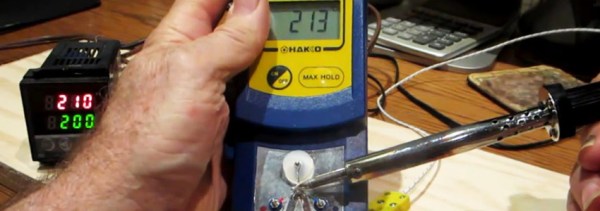Our commenteers have all said good things about the open-source TS100 soldering iron pencil: things like “it solders well”. But we’ve all got soldering irons that solder well. What possible extra value does having open-source firmware on a soldering iron bring? [Joric] answered that question for us — it can play Tetris. (Video embedded below.)
While that’s cool and all, it wasn’t until we were reading through the README over at GitHub that the funniest part of this hack hit us. Every time you lose a game, the iron tip temperature increases by 10 degrees. Tetris for masochists? The makings of some horrible bar bets? We’re just glad that it’s open-source, because we’re not that good and it would get too hot to handle fast.
We haven’t tried out a TS100 yet, but this hack is almost pushing us to impulse purchase. There are alternative versions of the firmware if you just don’t like the font, for instance. And now, Tetris. Will this become the hot new gaming platform that you’ve been waiting for? Let us know in the comments.













